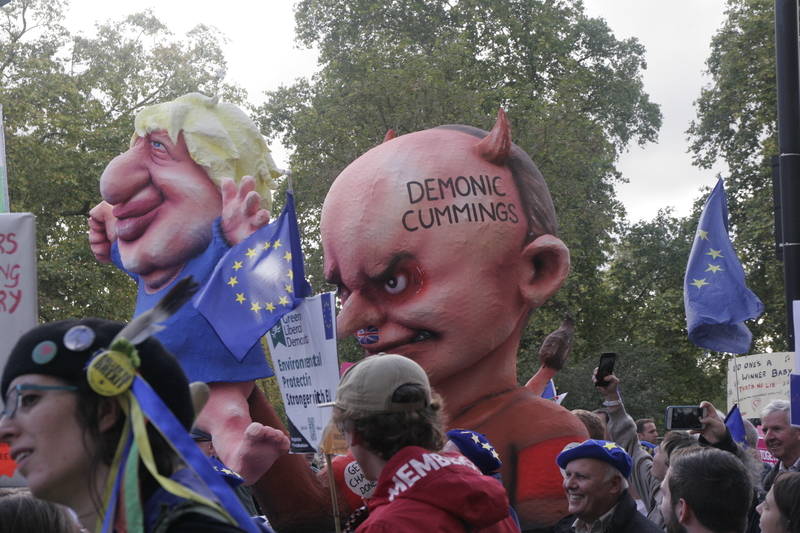On the afternoon of 23 May, the Culture Secretary, Oliver Dowden, tweeted that ‘Dom Cummings followed the guidelines and looked after his family. End of story.’ Despite Dowden’s emphatic assertion, this wasn’t the end of things by any means. The ‘story’ – centring around Cummings’s flouting of the lockdown regulations with his cross-country trip to County Durham – went on to dominate the headlines for at least the next seven days, until the focus of the news media was pulled dramatically away to events on the other side of the Atlantic. Although it’s now slipped a little down the news agenda, the incident is still controversial, and is likely to remain so for as long as Cummings keeps his post as special adviser to the Prime Minister. As stories go it has all the qualities of a moral fable, and thus it’s the perfect battle ground for disputes over public behaviour, political values and personal integrity.
In trying to impose their own narrative on events they ran into a series of further problems, all of which were, ironically, thrown up by the logic of storytelling itself.Storytelling plays a vital role in the business of politics and can take many different forms. Along with its close cousin ‘narrative’, it’s also something of a buzzword for political communications these days. As the authors of the updated version of Raymond Williams’s Keywords project wrote a few years ago, in the twenty-first century the concept of ‘narrative… has seen a sharp rise in frequency… especially in such phrases as “change the narrative” and “take control of the narrative,” which have become unavoidable in political commentary’. Dowden’s tweet was part of a concerted and highly-coordinated effort by Conservative HQ to do precisely this: provide unequivocal backing for Cummings, and in so doing to change the narrative that had taken hold in the media since details of his trip emerged. But in trying to impose their own narrative on events they ran into a series of further problems, all of which were, ironically, thrown up by the logic of storytelling itself.
At the heart of any dramatic story is the concept of emotional motivation. Humans tend to act in response to a number of primal emotions, and storytelling – especially when used for persuasive purposes – taps into these. The original aim of the government’s narrative was to justify Cummings’s actions by foregrounding one emotional rationale over another. Okay, so maybe he’d bent the rules ever so slightly with his trip (yes, this was a moral failing on his part), but he did so in order to satisfy a higher moral code: looking after his infant son. The government narrative was that Cummings should actually be deserving of our respect for this, and that those criticising him should be berated for not showing the same devotion to their own families.
The journey to Durham immediately became a symbol of hypocrisy, undermining the clear story that the government had earlier been trying to tell of a nation who are ‘all in this together.’The problem for the government, however, was that the specifics of the Cummings’s story sits within a broader narrative which has been a huge part of the political mainstream now for the last five years – and which is antithetical to the essence of their counter-narrative justifying the breach of lockdown. This is the overarching narrative of populism: that a corrupt and self-serving elite is threatening the wellbeing of the everyday people, and that the populist leader has emerged to right this wrong. This is a narrative which Boris Johnson and Dominic Cummings have made central to their own political careers (it’s the narrative that underpins Brexit, for example). But within this context, the journey to Durham immediately became a symbol of hypocrisy, undermining the clear story that the government had earlier been trying to tell of a nation who are ‘all in this together’.
There was one further way in which the logic of storytelling tripped up the government’s rehabilitation attempts. There’s a notable difference between messy real-life motivations and the need for tidy, coherent logic when relating these as a convincing, and legally plausible, story. In life we do things for complex reasons, many of which we aren’t necessarily fully aware of even ourselves. A story, on the other hand, relies on a clear pattern of causality. Everything happens for a reason. It needs to be coherent (otherwise it ends with holes in the plot), and to be based on rationally-explicable motivations so as to feel believable.
The incremental explanations put out by Cummings and the government after the fact seemed to be trying to retrospectively construct a plausible and convincing story around a collection of disparate and awkward facts. This required them to assign clear-cut motivations to behaviour which was likely a mix of premeditated and unpremeditated, instinctive and perhaps contradictory thoughts – but whenever they managed to squeeze one fact into the strict confines of this narrative, another fact awkwardly burst out the other side. And as their counter-narrative became ever more convoluted, it simply highlighted the simple emotional power of the original story: that Cummings had broken the rules that the rest of the country were desperately trying to stick with.



















Rate and Review
Rate this article
Review this article
Log into OpenLearn to leave reviews and join in the conversation.
Article reviews